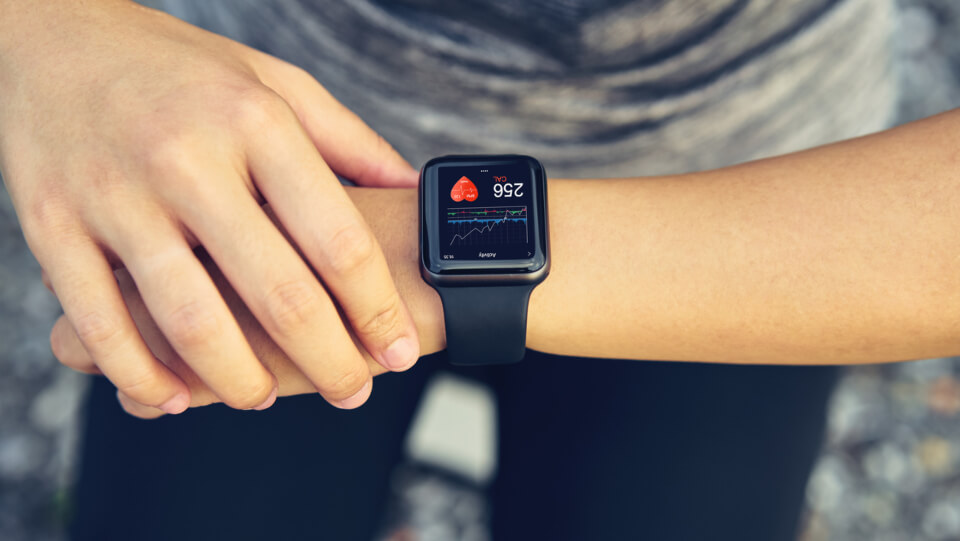Extreme weather is becoming more regular, and tensions worldwide make survival situations more likely to happen unexpectedly. There are ways to prepare without feeling burdened by emotional and physical weight.

Wearable tech brings new ease and confidence for survivalists that was previously missing. You can rely on it to weather any storm, literally or figuratively, giving you a greater chance of survival. Increase resilience by incorporating wearable technology that provides insight and strength you didn’t expect.
1. Versatile Headgear
Headwear is underrated when it comes to survival tech incorporation. Designers have several opportunities to optimize the space and incorporate peripherals to boost its usefulness.
One of the first ways is by incorporating noise-canceling tech. Depending on the survival situation, there may be intolerably loud sounds like natural disasters or explosions. Smart earmuffs or preinstalled earplugs in a helmet or hat will increase utility while protecting the sensory capability necessary for surviving in unexpected environments.
Another practical way to incorporate tech into headwear is through lamps and headlights. Navigating dark wilderness or power outages is safer and easier with hands-free light sources.
2. Incorporated Solar Panels
Solar panels can mesh with almost any wearable, from hats to T-shirts to backpacks. Maximizing surface area provides extra security for charging communications essentials or rechargeable batteries under challenging situations.
Wearable solar can be challenging to sport safely because it isn’t very flexible. For example, stable clothing items like bags make better surfaces since the fabric isn’t manipulated as much as long sleeves. Innovations in wearable solar panel technology are making the fittings more malleable and able to move with the body without damaging efficiency.
As with most wearable tech in survival situations, a gadget like this can reduce what you haul. A portable charging station like a solar panel eliminates the need for power banks and lightens your load.
3. Health Monitors
Any wearable technology that considers the top tenets of survival, like communications and hygiene, should be paramount to other alternatives. Health monitoring comes in countless forms nowadays, from smartwatches to implants, that can prevent you from having a dangerous episode.

You can choose wearable tech that best suits your health condition while considering how environmental stressors could alter things. Here are some metrics wearable tech could observe even in the most intense survival situation:
- Setting alerts, such as water intake and purification reminders
- Monitoring heart rate, blood oxygen and calorie expenditure
- Analyzing sleep duration and quality
- Tracking steps for measuring travel distances and average pace
- Administering medication or supplements
- Communicating with emergency services if vitals drop
4. Smart Textiles and Fabrics
Smart textiles are game-changing because of how much ground they cover. An intelligent fabric can be any composition, including synthetic or cotton, and can adapt to the environment to support the body.

The right fabric could bolster muscle healing after someone traverses miles of rough terrain. It does this by increasing blood flow and reducing lactic acid buildup — promoting injury prevention with enhanced compression technology. Athleticwear or outdoor gear designers make clothing that resists elements like water, sweat and heat.
Many smart textiles aim to be lightweight and durable to detect everything from temperature changes to improved endurance.
5. Vision Assistance
Protecting your vision in survival situations is critical, whether through smart glasses or goggles. Eyewear with technological advantages can provide various features, including navigation assistance or advanced eye protection during increased sun exposure.
Another wearable technology to help with sight is smart binoculars, which can hang securely around your neck at all times. They use laser technology to analyze distances with crystal-clear definition, whether you’re scoping a path or hunting. You can tread carefully no matter the environment because you will always be able to see due to night-vision features.
6. Heated Footwear
Some survival situations may put you in a cold area or have you walking long distances. Extremities are the most fragile in harsh climates. Regardless of the circumstance, taking care of your feet is a priority. Otherwise, you risk losing the most reliable form of transportation you have.
Prevent frostbite or increase comfort with heated shoes and insoles. Modern insoles can be rechargeable and are powered by thermal technology. They can connect to other smart devices or Wi-Fi to provide much-needed relief and increase blood flow.
Plenty of wearable tech monitors temperature-related metrics like humidity and sweat production. Having the right insulating socks and pants can assist in keeping your feet warm. New multilayer technology promotes temperature regulation by preventing the body from cooling instead of trying to heat it. Wicking technology provides a worthy supplement to thermal tech meant to increase temperature.
Optimize What You Wear for Survival
If you’re going to incorporate technology into your survival plan, you may as well wear it. Wearable technology provides versatility and security while preparing you for any circumstance. It can also monitor your health and keep you safe in dangerous situations.
Advancements in the industry are constant, and wearable technology will only become more intelligent and capable of complex tasks as humans experiment with it. Embracing it will place you ahead of the game if a survival situation occurs and boost your chances of survival.
Author Bio: Oscar Collins is the editor-in-chief at Modded. Follow him on Twitter @TModded for frequent updates on his work!

